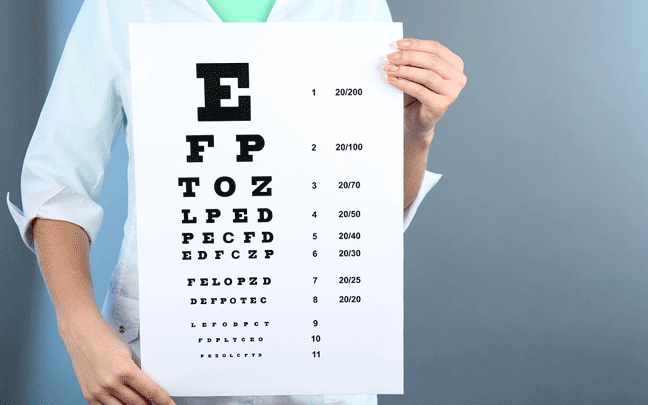The Federal regulations consist of evaluations to determine drivers’ physical and mental capabilities to perform their duties safely. In the DOT Physical Exam, a certified DOT Medical Examiner evaluates a person’s physical and mental health to ensure no medical conditions will stop their ability to drive and operate a vehicle safely.
Some people think that these regulations are mere red tape and unnecessary. But, decision-makers argue that the mortality rates due to human error are increasing and must be addressed. Before applying for this test, you need to know a few things. What to do before the test, what is it consist of, What kind of clinics are qualified to perform this test, etc?
The good news is that the DOT Physical Exam is simple, and you have nothing to worry about. This blog is prepared by the Southern Nevada Occupational Health Center team and will provide the necessary information you need to know about the DOT physical exam.
What you need to know about DOT Exam before taking it
If you come into one of these sections, you need a DOT Physical exam:
- You run a motor vehicle intended to carry more than 15 people.
- You have to move a motor vehicle meant to carry more than eight people.
- You work with a motor vehicle with a gross combination weight rating, total vehicle weight, overall vehicle weight rating, or a combined weight of over 10,000 pounds.
- You carry dangerous materials that need your vehicle to take place card.
Before the candidate drivers take the Department of Transportation physical exam, they all should be able to:
- See, hear, and think. The drivers must hold a visual or visual intellectual acuity of 20/40 with or without corrective visual help.
- Have 70 degrees or more vision in each eye.
- Hear a forced noise within the perimeter of 5 feet, but without using any corrective hearing aid.
- Pass the obligatory audiometer evaluation.
- Not having a history of high or low blood pressure. The blood pressure required levels are at 140/90
What does DOT Physical Exam Cover?
-
Vision
Drivers needed at least 20/40 acuity in each eye with or without correction. They need at least 70″ peripheral in the horizontal meridian, measured in each eye.
-
Hearing
Drivers must understand what is well-known as a “forced whisper” at a range of 5ft or less by hearing aid. This standard relates to an average hearing loss in the better ear of less than 40 dB.3.
-
Blood pressure or pulse rate
The medical examiner will examine the driver’s blood pressure and pulse for high blood pressure and unusual heartbeats.
-
Urinalysis
A urinalysis is obligatory. The test looks for signs of underlying medical conditions such as diabetes.
-
Physical Examination
The physical test will cover a dozen different categories:
Overall appearance
- Eyes
- Ears
- Mouth and throat (to look for irregular things in breathing or swallowing)
- Heart (extra sounds)
- Lungs and chest, but not including breast test (unusual breathing, impaired respiratory functions, cyanosis, etc.)
- impaired stomach and Viscera (enlarged liver, viscera, muscle weakness)
- Vascular (irregular signs, veins)
- Genito-urinary (hernias) vein reorder
- Extremities (limb impaired)
- Spine and other bone-related diseases (back surgery, limitation of motion, tenderness, etc.)
- Neurological (coordination or speech model, ataxia, asymmetric deep tendon reflexes)
What to Bring to a DOT Physical Exam?
Commercial drivers must bring a comprehensive list of their prescriptions, including the dosage regimen, dosages, and their doctors’ names and addresses. To save time, clinics suggest drivers fill out the health history questionnaire before coming.
To ensure the exam runs as quickly as possible, drivers with certain medical matters must bring the related documents or items. For example, drivers with hearing problems must get eyeglasses, contacts, or hearing aids.
Diabetic drivers must bring the newest lab results from their Hemoglobin A1C (HgAIC) and blood sugar logs.
Drivers with heart-related problems must at least bring a letter from their cardiologist that draws their medical records and current medications and shows that they are safe to work.
What items should you bring to a DOT Physical exam?
- Complete the driver’s portion of the Medical Examination Report before your visit to save time.
- This exam is not covered by insurance.
- Carry a comprehensive list of ALL medications, including the doctor’s name and doses.
How often is a DOT exam required?
Most medical certifications are valid for two years. However, if you have low or high blood pressure or any other condition that could hinder your driving ability, you may get a 1-year certificate. And if you have very high blood pressure or other treatable conditions, you may receive a 3-month license. After three months, if you show a change in that condition, you’ll be eligible to get a one or two-year certificate.
Unfortunately, sometimes drivers start suffering from a condition (after receiving their certificate) that makes it risky to complete their responsibilities on the job. If this is true, you have to stop driving, have the condition treated, then take a DOT physical to ensure your safety and that of fellow drivers.







